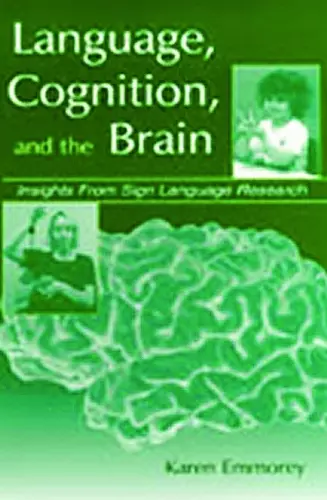Language, Cognition, and the Brain
Insights From Sign Language Research
Format:Hardback
Publisher:Taylor & Francis Inc
Published:1st Nov '01
Currently unavailable, our supplier has not provided us a restock date
This hardback is available in another edition too:
- Paperback£61.99(9780805833997)

Once signed languages are recognized as natural human languages, a world of exploration opens up. Signed languages provide a powerful tool for investigating the nature of human language and language processing, the relation between cognition and language, and the neural organization of language. The value of sign languages lies in their modality. Specifically, for perception, signed languages depend upon high-level vision and motion processing systems, and for production, they require the integration of motor systems involving the hands and face. These facts raise many questions: What impact does this different biological base have for grammatical systems? For online language processing? For the acquisition of language? How does it affect nonlinguistic cognitive structures and processing? Are the same neural systems involved?
These are some of the questions that this book aims at addressing. The answers provide insight into what constrains grammatical form, language processing, linguistic working memory, and hemispheric specialization for language. The study of signed languages allows researchers to address questions about the nature of linguistic and cognitive systems that otherwise could not be easily addressed.
"Written for the general reader with an interest in any of the main topics covered, the book provides introductory linguistic background via a detailed description of American Sign Language and an account of the recent emergence of a new sign language in Nicaragua; myths regarding sign language are debunked; and the demographics and culture of American Sign Language users are outlined."
—LLBA
"This book would be of interest to anyone who wants to understand more about human languages and how the brain processes those languages, although knowledge of ASL and linguistics (especially phonology and morphology) would be helpful. As a second language learner and educator who has spent over 25 years challenged by the nuances and intricacies of ASL, I can honestly say I was fascinated with this book. Some parts were a succinct review of what we already know, some parts presented cutting-edge information, and some parts were quite challenging. Ultimately, however, the book made me think about what I already know and encouraged me to continue exploring how the brain processes language."
—Studies in Second Language Acquistion
ISBN: 9780805833980
Dimensions: unknown
Weight: 910g
408 pages